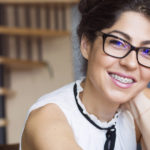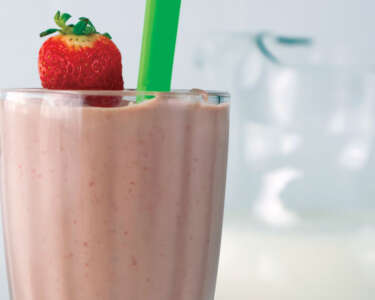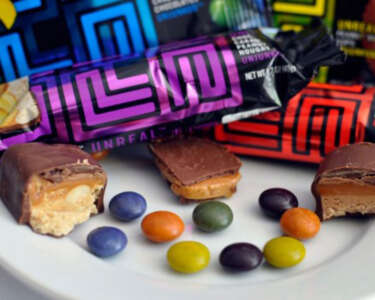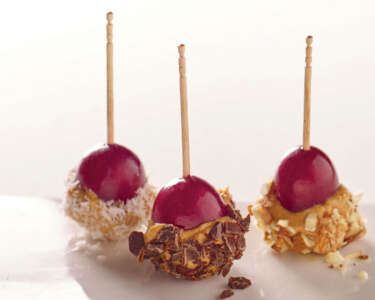[dropcap type=”default”]A[/dropcap]sk any parent what they dread about school starting and packing lunches, planning dinners and doling out endless snacks will likely be at the top of the list. But what if it didn’t have to be that way? This year we turned to Registered Dietitian and Nutritionist Danielle Marks Williamson, MS, RDN, a mom herself, to walk us to through a typical school and day and help all the parents out there make smart and healthy choices for their kids. Here’s what she had to say…
Mornings are rushed and tough for high schoolers especially. What’s a good, healthy breakfast to grab and keep their energy up?
Just as the old saying goes, breakfast is certainly the most important meal of the day. It jump starts our metabolism and gives us energy to use throughout the day – especially for your brain! Granola bars are a great choice as long as they have less than 10 grams of sugar per serving and more than two grams of fiber per serving. Hand fruits such as bananas, apples, and oranges are always a great choice. If all else fails, even a glass of milk will do – an eight ounce glass of skim milk has eight grams of protein and 12 grams of carbohydrate – both of which are perfect fuel for the morning.
Parents are always dreading making lunch. What staples can we keep on hand in the pantry or fridge to make lunch packing easier?
A nice formula for packing a lunch would be: whole grains, protein, fruits and vegetables, and dairy. An easy way to add whole grains is to buy whole wheat or whole grain sandwich bread each week. Purchase healthy proteins such as lean meats (sliced turkey or chicken), beans or nut butter. Popular fruit favorites are apples, bananas, clementines, raisins, or unsweetened applesauce. Try to avoid purchasing fruit cups preserved with sugar or fruit juice. To incorporate more vegetables, add lettuce, tomato and cucumber to sandwiches or pack a bag of baby carrots. Easy dairy staples include low-fat string cheese or plain yogurt.
Kids come home from school famished, give me an example of a good after-school snack.
Afterschool snacks are an essential part of your child’s diet. The trick is to give your kids food that is packed with nutrients to keep their bellies full until dinner. The best way to do this is to include both fiber and healthy fats. Try to avoid foods high in sugar. Some healthy snack examples include:
- String cheese
- Celery with nut butter and raisins
- Whole grain toast or crackers with smashed avocado or hummus
- Cut up veggies with hummus or 2 tablespoons of your favorite dressing
- Plain yogurt with fruit and nuts
- Brown rice cakes with nut butter
Activities like baseball or gymnastics can often run late at night. What’s your advice for how to navigate keeping kids full and energized without giving them dinner at 10 pm?
Proper nutrition goes hand in hand with optimal athletic performance. Kids absolutely need to eat a nutritious meal before practice in order to keep them energized for the physical exertion ahead. This might include food from home, or a healthy option from a restaurant with complex carbohydrates such as brown rice or quinoa. Avoid consuming fried foods, foods high in sugar or sodas, which will not provide sustained energy. If practice ends late, kids can have a light snack before going to bed. This might include a sandwich on whole grain bread, a piece of fruit and some cheese, or a bowl of whole grain cereal with nonfat milk (aim for less than 10 grams of sugar per serving).
What’s your favorite piece of nutritional advice for parents?
Make half your child’s plate fruits and vegetables! Fill their plates with a variety of colors, textures and shapes. Teaching your children healthy eating habits from a young age will prevent obesity, and give them a lifelong healthy relationship with food.














 Deering Estate
Deering Estate
 Massage Envy South Miami
Massage Envy South Miami
 Calla Blow Dry
Calla Blow Dry
 My Derma Clinic
My Derma Clinic
 Sushi Maki
Sushi Maki
 Sports Grill
Sports Grill
 The Healthy Kitchen
The Healthy Kitchen
 Golden Rule Seafood
Golden Rule Seafood
 Malanga Cuban Café
Malanga Cuban Café

 Kathleen Ballard
Kathleen Ballard
 Panter, Panter & Sampedro
Panter, Panter & Sampedro
 Vintage Liquors
Vintage Liquors
 The Dog from Ipanema
The Dog from Ipanema
 Rubinstein Family Chiropractic
Rubinstein Family Chiropractic
 Your Pet’s Best
Your Pet’s Best
 Indigo Republic
Indigo Republic




 ATR Luxury Homes
ATR Luxury Homes


 2112 Design Studio
2112 Design Studio
 Hamilton Fox & Company
Hamilton Fox & Company
 Creative Design Services
Creative Design Services
 Best Pest Professionals
Best Pest Professionals
 HD Tree Services
HD Tree Services
 Trinity Air Conditioning Company
Trinity Air Conditioning Company
 Cisca Construction & Development
Cisca Construction & Development
 Mosquito Joe
Mosquito Joe
 Cutler Bay Solar Solutions
Cutler Bay Solar Solutions


 Miami Royal Ballet & Dance
Miami Royal Ballet & Dance
 Christopher Columbus
Christopher Columbus
 Pineview Preschools
Pineview Preschools
 Westminster
Westminster
 Carrollton
Carrollton
 Lil’ Jungle
Lil’ Jungle
 Frost Science Museum
Frost Science Museum
 Palmer Trinity School
Palmer Trinity School
 South Florida Music
South Florida Music
 Pinecrest Orthodontics
Pinecrest Orthodontics
 Dr. Bob Pediatric Dentist
Dr. Bob Pediatric Dentist
 d.pediatrics
d.pediatrics
 South Miami Women’s Health
South Miami Women’s Health

 The Spot Barbershop
The Spot Barbershop
 My Derma Clinic
My Derma Clinic




 Miami Dance Project
Miami Dance Project

 Rubinstein Family Chiropractic
Rubinstein Family Chiropractic
 Indigo Republic
Indigo Republic

 Safes Universe
Safes Universe
 Vintage Liquors
Vintage Liquors
 Evenings Delight
Evenings Delight





 Atchana’s Homegrown Thai
Atchana’s Homegrown Thai
 Baptist Health South Florida
Baptist Health South Florida

 Laser Eye Center of Miami
Laser Eye Center of Miami
 Visiting Angels
Visiting Angels
 OpusCare of South Florida
OpusCare of South Florida

 Your Pet’s Best
Your Pet’s Best





 HD Tree Services
HD Tree Services
 Hamilton Fox & Company
Hamilton Fox & Company


 Creative Design Services
Creative Design Services